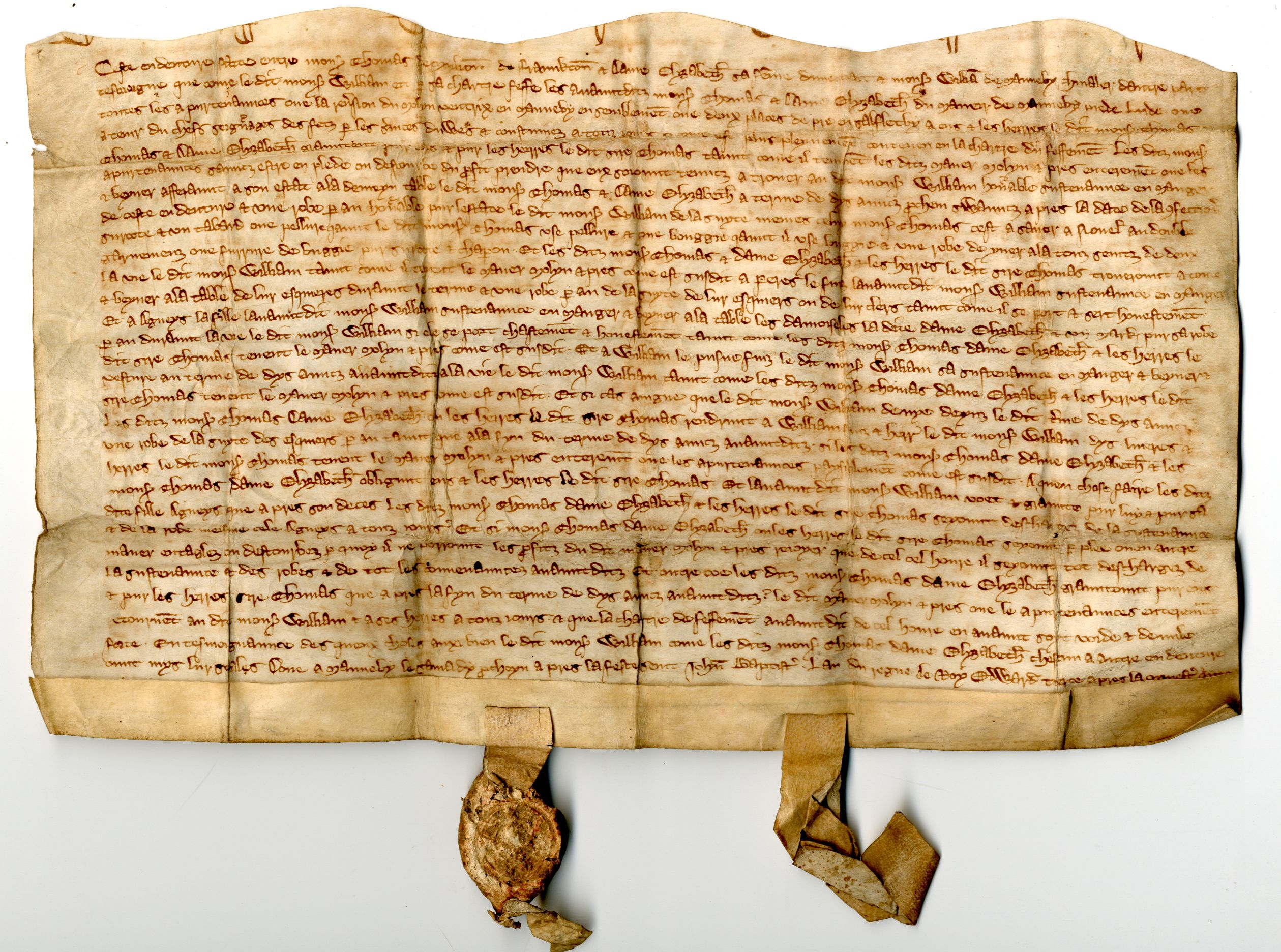Fashion Rules: a 14th century Knight's livery
The idea of fashion and what makes an item of clothing desirable and ‘trendy’ is not new. In the Middle Ages it was the aristocracy and the royal family who caused a stir with their wardrobes.
Only the wealthy could dress in fashionable clothes. Laws dating back to the Romans restricted ordinary people in their expenditure. These were called Sumptuary Laws. English Sumptuary Laws were imposed by the monarch to curb the expenditure of the people and to control behaviour and ensure that the class structure was maintained. Sumptuary laws might apply to food, beverages, furniture, jewellery and clothing.
All those with expendable income would have been aware of the sumptuary laws. The penalties for violating them could be harsh - fines, the loss of property, title and even death in some extreme cases. Medieval society was highly stratified and individuals knew their place. Clothing provided an obvious and clear method of distinguishing one’s place in the social hierarchy in a society which was largely illiterate.
The first record of sumptuary legislation is an ordinance of the City of London in 1281 which regulated the apparel, or clothing, of workman. These related to workers who had working clothes supplied by their employer as a part of their wages – this is what the phrase and clothes suitable to his estate in the document bellows refers to. Fashions and trends between countries were frequently imitated and this first law may have been copied from one on the continent. The second record of sumptuary legislation occurred during the reign of King Edward II (1284-1327) related to food expenditure. King Edward II issued a proclamation against 'outrageous consumption of meats and fine dishes' by nobles.
The next records of sumptuary legislation occurred during the reign of King Edward III (1312-1377). King Edward III passed these Sumptuary Laws to regulate the dress of various classes of the English people, promote English garments and to preserve class distinctions by means of costume, clothes and dress.
The document below is an indenture of enfeoffment from the 14th century. The knight William de Manneby [Manby] has transferred the rights to his to the Manor of Manneby, its appurtenances, the windmill and two plots of meadowland to Thomas de Multon of [Frankton] and his wife Elyzabeth in exchange for ten years of his service. In exchange for the property, de Multon and his wife agreed to feed William from their table and to clothe in a manner ‘suitable to his estate’ for the term of his tenure. The de Multons also pledge to feed and clothe William’s three children for the period of his tenure, on the condition that the children also provide service.

The indenture is part of a collection of deeds belonging to the Hospital of St John. The collection includes deeds for Manby with an advowson, Saltfleetby, Cateby, Grimsby Parva, and Thorgramby [Thorganby], Lincolnshire. They range in date from 1295 to 1493 and are in Latin, French and English. The document discussed here is in French.
The indenture is transcribed as:
Indenture, whereby, whereas William de Manneby, knight enfeoffed[1] to Thomas de Multon of ffraunkton and Lady Elyzabeth his wife of the Manor of Manneby near Lude [Louth], with the appurtenances, the reversion of the wind-mill and two plots of meadow in Salfletby, to hold of the lords by service; Thomas and Elyzabeth grant to William honourable sustenance in eating and drinking at their own table for the term of ten years from the date of the indenture, and clothes suitable to his estate, that is to say, at the new year a double surcoat and a tabard, a fur when Thomas wears one and a bouggee[2] similarly, and at All Saints’ Day a winter robe of two pieces, consisting of a surcoat of buggee and a chaperon[3]. And Thomas and Elyzabeth will find food and drink for William’s son, Peres, at the table of their esquires, and provide him clothes such as they give their esquires, for William’s life, so long as he behave and serves them honestly. For Agneys, the daughter of William, they promise food and drink at the table of Elyzabeth’s maids, and one mark yearly for her clothes during Williams life-time, so long as she behaves chastely and honestly. For William, the younger son of William, they promise food and drink and clothes during the life-time of William the elder. If William dies before his ten years are up, Thomas and Elyzabeth will give to William his son ten liveries and an esquire’s robe each year until the term is completed. After William’s death, Thomas and Elyzabeth have no more concern with the support of Agnes. And if they cannot get the profits of the manor, mill and meadows, they are discharged from the support of William and his family for ever. After ten years, the manor etc: shall revert to William or his heirs.
At Manneby, Saturday after the feast of St John the Baptist, 4 Edward: III[4].
[1] In the Middle Ages, especially under the European feudal system, feoffment or enfeoffment was the deed by which a person was given land in exchange for a pledge of service. This mechanism was later used to avoid restrictions on the passage of title in land by a system in which a landowner would give land to one person for the use of another. The common law of estates in land grew from this concept.
[2] Bouggie or buggie [sic] is most likely bogee from the Medieval French for a fur made of lamb which originated in North Africa and is sometimes referred to as ‘astrakan’. This fur was not intended for warmth but for decoration.
[3] In the early 14th century this was a utilitarian hood with a small cape but later on in the century it evolved into a complicated and fashionable hat worn by the wealthy in town settings.
[4] 1 July 1330/31